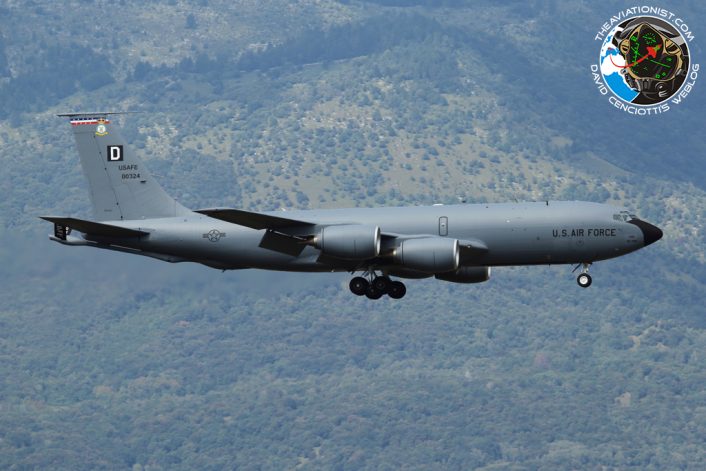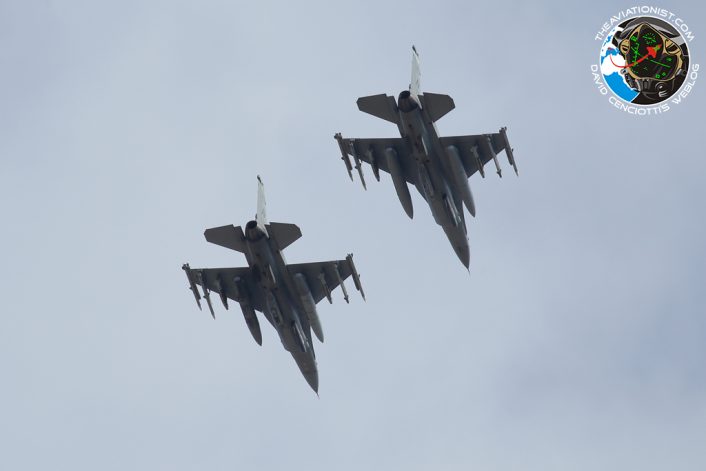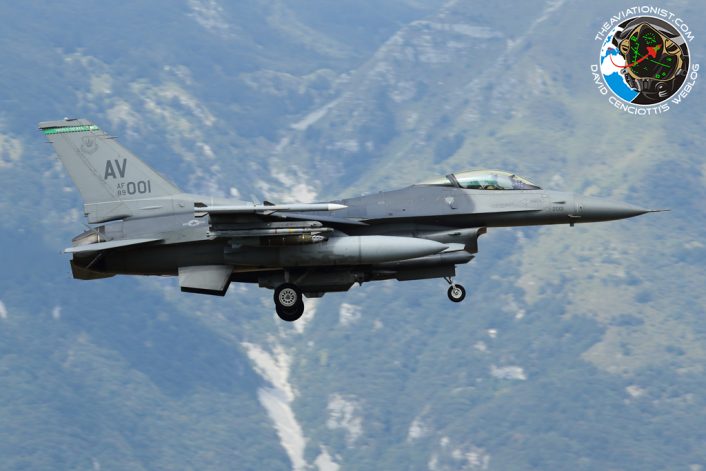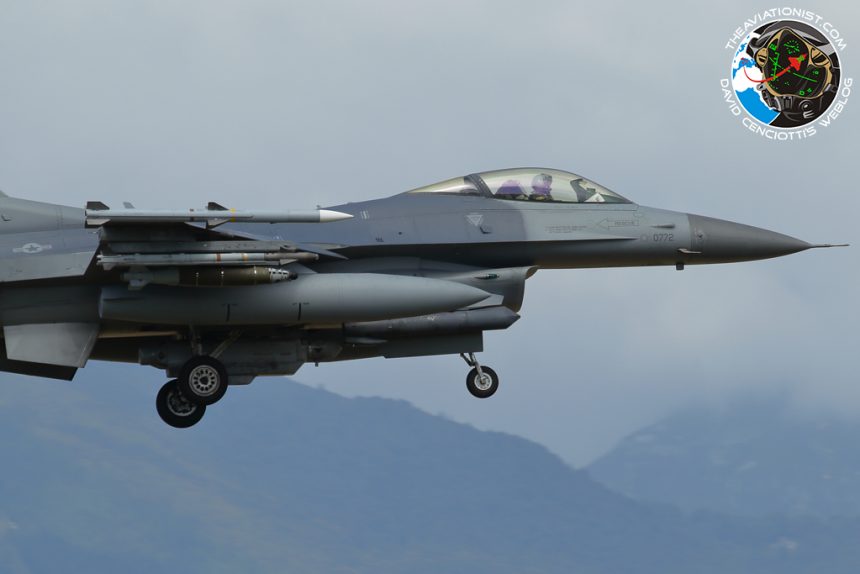Looks like two F-16s from Aviano were involved in a somehow “mysterious” mission over the Mediterranean Sea during last weekend.
As the overnight trilateral strike on Syria on Apr. 13 and 14 has proved, an OSINT (Open Sources Intelligence) analysis based on flight tracking websites ADS-B, Mode-S and MLAT and other information shared via social media, may provide a clear “picture” of the air asset involved in a raid as the operation unfolds and well before the involvement of this or that asset is officially confirmed.
Every day, aviation enthusiasts, journalists and, generally speaking, anyone who has an Internet connection a computer, laptop or smartphone, can track flights in real-time via information in the public domain.
As happened on Saturday Sept. 8, 2018 when most of the flight tracking experts noticed something weird off the coasts of Northern Africa: an “eye catching” gathering of aircraft.
Currently off the coast of #Libya (not position showing)
USAF Kc135R QID562
USAF Kc135R QID564
US Navy EP-3E Orion 157326
US Marinne Corps KC130 Bronco91
USAF RQ4 Global Hawk 042021 pic.twitter.com/koydx6BNXP
— Manu Gómez (@GDarkconrad) September 8, 2018
If the constant presence of an RQ-4 Global Hawk, an EP-3E ARIES II or another spyplane in the southern or eastern Med Sea is something normal considered the ISR (Intelligence Surveillance Reconnaissance) missions flown in the region since 2011, the presence of a pair of F-16s from Aviano Air Base (supported by one or two KC-135 tankers) off Libya (at least based on the position of the accompanying aerial refueler) is something really unusual. Moreover, the 31st FW’s jets rarely fly on weekends if they are not deploying somewhere or returning from a deployment. And, above all, they don’t carry Live armament, unless they are involved in real combat operations.

On Sept. 8, two F-16s belonging to the 555th Fighter Squadron/31st FW launched from Aviano, reportedly operated off Libya, where they were supported by KC-135R tankers with the 100th ARW from RAF Mildenhall, and then returned home.
#QID562 / 58-0100
Now descending into NAS Sigonella.#QID564 / 60-0324
Still on station off the coast of Tripoli… #SRAirband @5472_nde pic.twitter.com/A8bTjqyt8i
— SR Airband & Aviation (@Andy007_SR_A) September 8, 2018
As the photographs in this post (taken outside Aviano on that day by photographer Claudio Tramontin) show, the Vipers carried 3x AIM-120C AMRAAM and 1x AIM-9X air-to-air missiles (AAMs), 2x GBU-54 500-lb laser-guided JDAMs (Joint Direct Attack Munitions along with external fuel tanks, a AN/ALQ-131 ECM pod as well as the Sniper ATP (Advanced Targeting Pod): a configuration that gave the F-16s the ability to perform DCA (Defensive Counter Air) with AAMs as well as engage (moving) ground targets with precision and minimal collateral damage. Pilots worn the JHMCS (Joint Helmet Mounted Cueing Sight).

While the purpose of their mission is unknown (we can speculate they were “on call” or supporting other assets or after a target that eventually did not show up or could not be attacked, etc) what is sure is that they did not use any of their ordnance: the aircraft returned to Aviano with all the weapons they had on departure.

The situation in Libya has dramatically deteriorated in recent weeks, due to heavy clashes in Tripoli. A rocket attack on Mitiga International Airport (reopened on Friday Sept. 7, following clashes between rival militias caused, flights to the Libya capital to be diverted on Tuesday.









